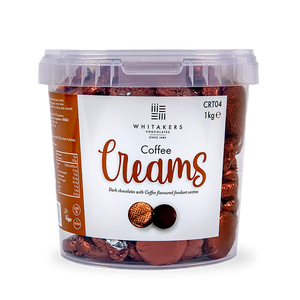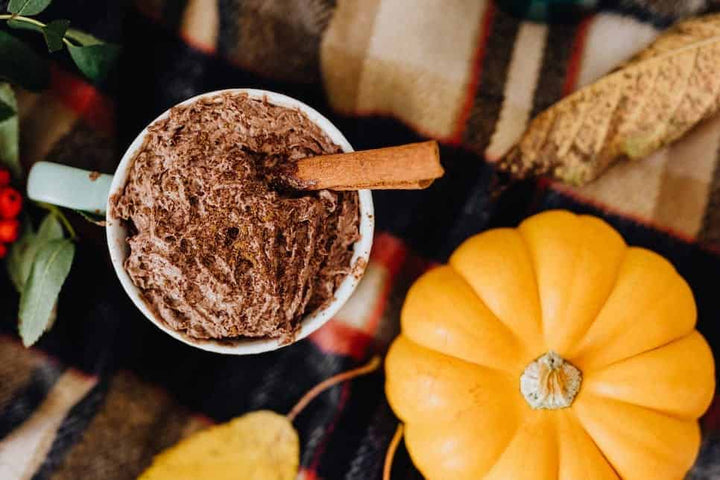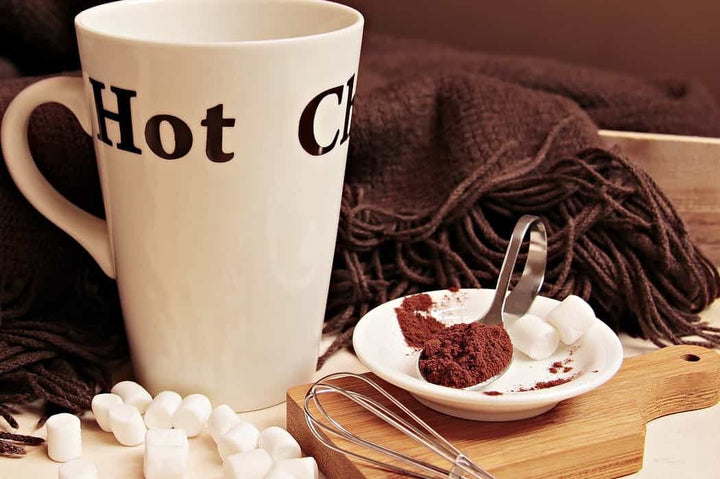Are you a hot chocolate lover but concerned about its impact on your calorie intake?
You are not alone!
Hot chocolate is a beloved comfort drink, particularly during the colder months of winter, but it is high sugar and calorie content can be a cause for concern for those watching their weight or managing their sugar intake.
In this post, we will look at the calorie content of hot chocolate, including the various factors that affect it, and offer practical tips for making healthier choices without sacrificing the comforting taste of your favourite drink.
Whether you enjoy hot chocolate as an occasional indulgence or a daily treat, this guide will help you make informed choices and maintain a balanced approach to your diet.
How Many Calories In Hot Chocolate?
The number of calories in hot chocolate can vary depending on the ingredients and serving size.
On average, an 8 oz (240 ml) serving of hot chocolate made with whole milk and topped with whipped cream contains around 220-300 calories.
If made with reduced fat or skimmed milk, the calorie count may be lower, typically ranging from 150-210 calories per serving.
The below chart compares the calories, carbs, fats and protein that are found in skimmed, semi and full-fat milk:
| Milk Type | Calories per 100ml | Carbs per 100ml | Fats per 100ml | Protein per 100ml |
| Skimmed Milk | 35 kcal | 4.8 g | 0.1 g | 3.4 g |
| Medium Milk | 47 kcal | 4.7 g | 1.6 g | 3.0 g |
| Full-fat Milk | 64 kcal | 4.8 g | 3.6 g | 3.2 g |
Note: The values provided are approximate and may vary slightly based on the brand and processing method.
(If you love eating chocolate but want to stay healthy, you might like to read about how many calories in a chocolate bar?)
Be Wary Of Extra Calories!
While hot chocolate can be a delicious and comforting drink, adding sugar, alcohol, marshmallows, and other ingredients can significantly increase its calorie content.
Sugar, in particular, is a common ingredient added to hot chocolate, contributing to its sweet taste.
However, sugar is also high in calories and can lead to weight gain and other health issues when consumed in excess.
For example, adding just one tablespoon of granulated sugar to a cup of hot chocolate can add around 50 calories, while marshmallows and whipped cream can add up to 100 calories per serving.
Alcohol, such as Bailey's Irish Cream, adds an additional 100-150 calories per serving, depending on the brand and amount added.
Furthermore, many pre-packaged hot chocolate mixes may contain additional sugar, fats, and other ingredients that can contribute to higher calorie content.
It is essential to read the label and choose low-sugar and low-fat options, where possible.
So, while hot chocolate can be a comforting and delicious treat, adding sugar, alcohol, and other ingredients can increase the calorie content significantly.
By being mindful of the ingredients you add, you can enjoy a satisfying and healthier hot chocolate experience.
(Have you even travelled to the US? Why does American chocolate taste like sick?)
What Nutrients Are There in Hot Chocolate?
The exact nutrient composition of hot chocolate can vary based on the recipe and the specific brand of hot chocolate mix used.
However, here is a general breakdown of the nutrients you can expect to find in a typical serving of hot chocolate made with a mix:
- Calories: 80-120 (depending on the serving size and whether made with water or milk)
- Fat: 1-3 grams (mostly from cocoa butter)
- Carbohydrates: 15-25 grams (mostly from sugar and cocoa powder)
- Protein: 1-2 grams (mostly from milk or milk powder)
- Fiber: 1-2 grams (mostly from cocoa powder)
- Calcium: 150-200 milligrams (mostly from milk or milk powder)
- Iron: 1-2 milligrams (mostly from cocoa powder)
It's important to note that some hot chocolate mixes may also contain additional ingredients, such as marshmallows, whipped cream, or flavourings, which can add calories, sugar, and other nutrients.
Be sure to check the nutrition label on your hot chocolate mix for more detailed information on its nutrient content.
(If you are a female chocaholic, you might like to read this post: Why do I crave chocolate during my period?)
How to Make Low-Calorie Hot Chocolate
Here's a recipe for a low-calorie hot chocolate that you can make at home:
Ingredients:
- 1 cup unsweetened vanilla almond milk (or any non-dairy milk of your choice)
- 1 tablespoon unsweetened cocoa powder
- 1-2 teaspoons of stevia or any other zero-calorie sweetener to taste
- 1/4 teaspoon vanilla extract
Instructions:
- Heat the almond milk in a small saucepan over medium heat until hot, but not boiling.
- Add the cocoa powder and whisk until fully combined and no lumps remain.
- Stir in the stevia or other sweetener and vanilla extract.
- Taste and adjust the sweetness to your liking.
- Pour into a mug and enjoy!
This low-calorie hot chocolate recipe makes approximately one serving and contains about 40-60 calories per cup, depending on the type of non-dairy milk and sweetener you use.
You can also customise the recipe by adding spices such as cinnamon or nutmeg for extra flavour.
Final Notes On Hot Chocolate and Calories
While hot chocolate can be a delicious and comforting treat on occasion, it's not necessarily the best choice for an everyday drink.
Most hot chocolate mixes are high in sugar and calories, which can have negative effects on your health if consumed in excess.
However, enjoying a warm cup of hot chocolate as an occasional treat can be a wonderful way to indulge your taste buds and lift your mood.
As with most things in life, moderation is key!
Related Post: Can Hot Chocolate Soothe a Sore Throat?





















